
Quentin Tarantino wears his influences on his sleeve more than almost any other director. From recreating iconic shots and special effects to using music cues from his favorite movies, Tarantino's oeuvre is a film school in and of itself. In particular, "Kill Bill" borrows from (and pays homage to) countless exploitation films, Spaghetti Westerns, and martial arts movies. Tarantino's classic story of vengeance has become a classic in its own right, and fans still hope for a third entry in the Bride's saga.
While "Kill Bill" is a brilliantly executed, entertaining film on its own merits, tracking down its influences deepens the audience's appreciation of Tarantino's work and exposes it to magnificent cinema outside the world of the Deadly Viper Assassination Squad. An account of every reference in both volumes of "Kill Bill" would require a far longer list than is possible here, but these 10 films are an excellent place to start digging into the films that inspired Tarantino's bloody tale of revenge.
Lady Snowblood

A dying woman (Miyoko Akaza) gives birth to a baby girl in prison. She tells the other inmates that she will pass her vendetta against the gang that killed her husband and son on to her daughter, Yuki. The adult Yuki (Meiko Kaji), now known as Lady Snowblood, continues her mother's quest, hunting down and killing the people who wronged her. With a blade hidden in her wagasa (umbrella), she slices her way down the list to avenge the wrongs done to her family.
Director Toshiya Fujita's 1973 film "Lady Snowblood" is the most obvious influence on "Kill Bill." The film's fingerprints are all over Quentin Tarantino's revenge epic, from the overarching story of methodical vengeance to the non-linear narrative and even the visuals and music from the film. The song "Flower of Carnage," which star Kaji sings, is the theme to "Lady Snowblood" and plays over O-Ren Ishii's (Lucy Liu) death scene in "Kill Bill: Volume 1."
A reporter (Toshio Kurosawa) turns Lady Snowblood's tale of vengeance into a story told via manga panels in the film, and O-Ren's origin is presented in an anime sequence. The climactic katana battle in the snow outside the House of Blue Leaves is another clear callback to the end of "Lady Snowblood." You could fill this entire list with nothing but the "Lady Snowblood" references, which further proves how strongly it influenced Tarantino's work.
Switchblade Sisters
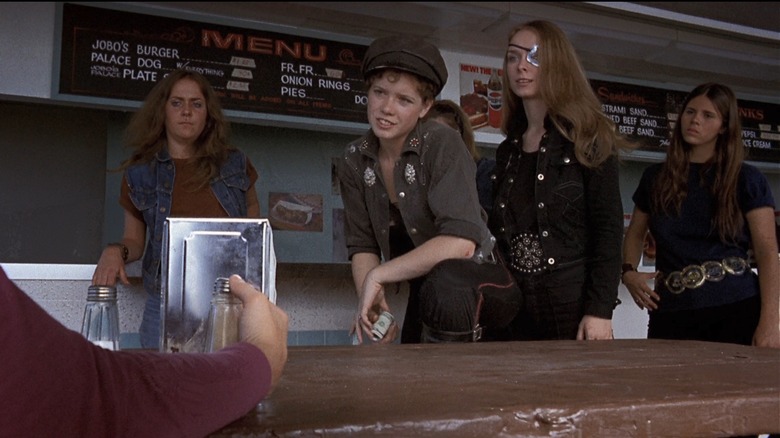
Jack Hill's 1975 exploitation classic "Switchblade Sisters" is one of cinema's most entertaining stories of female empowerment. A power struggle between Lace (Robbie Lee), the leader of the girl gang the Dagger Debs, and tough newcomer Maggie (Joanne Nail) highlights feminist and anti-capitalist themes in Hill's work. Patch (Monica Gayle) is the troublemaker in the middle, exacerbating the rift amongst the Debs due to her jealousy over Maggie usurping her friendship with Lace.
Quentin Tarantino is a big fan of "Switchblade Sisters." He produced a DVD edition through his Rolling Thunder Pictures label and recorded a commentary track with Hill. Though the film might not share quite as much DNA with "Kill Bill" as "Lady Snowblood," the references are clear. Patch is a bitterly jealous woman with an eyepatch who schemes to oust a rival — just like "Kill Bill's" Elle Driver (Daryl Hannah). Tarantino even cast stuntwoman Jeannie Epper, who plays a juvenile hall matron in the film, in "Kill Bill: Volume 2."
"Switchblade Sisters" is a film about female power and independence from men, and "Kill Bill" is about a powerful woman cutting ties with an abusive man for good. "Switchblade Sisters" is a grindhouse classic, and Tarantino's love for that style is all over "Kill Bill." He even uses the trademark "Feature Presentation" card and music in "Kill Bill: Volume 1" that he would later use in the movie "Grindhouse."
Five Deadly Venoms
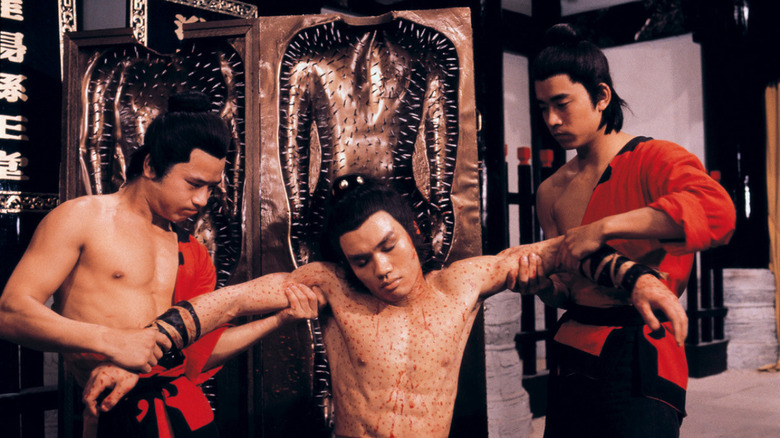
Paying tribute to the Shaw Brothers Studio of Hong Kong cinema fame, "Kill Bill: Volume 1" opens with the legendary Shawscope logo. The Shaw Brothers' 1978 film, "Five Deadly Venoms," is an unmistakable influence on the five members of Quentin Tarantino's Deadly Viper Assassination Squad. In the film, the dying master (Dick Wei) of Venom House sends his last pupil, Yang Tieh (Chiang Sheng), to track down five former students and dispatch them if they are using what they learned under their master's tutelage for evil. These five students fight in different styles, taking the names of each style for themselves: Centipede, Lizard, Scorpion, Snake, and Toad.
The parallels between the Five Venoms and the Deadly Viper Assassination Squad are obvious. Vernita Green (Vivica A. Fox) is Copperhead. She specializes in knives. Elle Driver, aka California Mountain Snake, has an affinity for poisoning her victims. The Bride's alias is Black Mamba, and her weapon of choice is the katana. Budd (Michael Madsen) is Sidewinder, which is appropriate for his fondness for sneak attacks. Lying in wait for the Bride with a shotgun loaded with rock salt and burying her alive while she's bound and unable to fight back are examples of his trademark underhanded tactics. O-Ren is Cottonmouth. She also fights with a katana, but she's not quite as deadly as the infamous Black Mamba. These five assassins, led by Bill (David Carradine), or Snake Charmer, each have their distinct fighting styles and corresponding codenames, just like the Five Venoms.
Battle Royale

"Kill Bill" is filled with many of Quentin Tarantino's favorite actors. Grindhouse mainstay Sid Haig shows up as a bartender, and kung fu film star Gordon Liu plays the dual roles of Johnny Mo and Pai Mei. While most of the films Tarantino draws inspiration from were released in the 1970s, he pays homage to a more recent film with the character of Gogo Yubari (Chiaki Kuriyama). Kuriyama appeared in Kinji Fukasaku's 2000 film "Battle Royale" as a schoolgirl forced to play a deadly game in which classmates must kill each other on a deserted island until only one is left standing. Her character, Takako Chigusa, fights off a male classmate who threatens to rape her and stabs him.
In "Kill Bill: Volume 1," Gogo uses the same tactic, stabbing a businessman who expresses his sexual interest in her and giggling at the irony. "Do you still wish to penetrate me, or is it I who has penetrated you?" She even wears a schoolgirl uniform in her capacity as O-Ren's bodyguard as a nod to the innocent schoolkids in "Battle Royale." Gogo's gleeful malice and superb fighting skills have made her a fan favorite. This is par for the course for Tarantino, given his interest in propelling his favorite performers (Zoe Bell and Pam Grier, for example) into the spotlight, either for the first time or as a return to former glory.
If you or anyone you know has been a victim of sexual assault, help is available. Visit the Rape, Abuse & Incest National Network website or contact RAINN's National Helpline at 1-800-656-HOPE (4673).
Death Rides A Horse
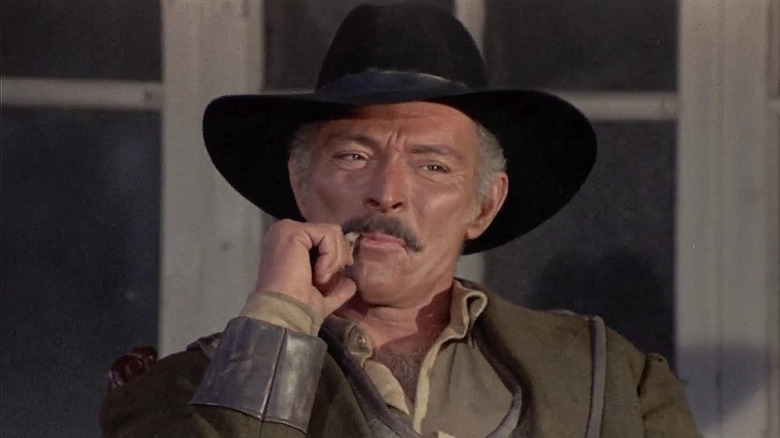
"Death Rides a Horse," a Spaghetti Western revenge epic from director Giulio Petroni, is another prominent stylistic influence on "Kill Bill." Quentin Tarantino uses composer Ennio Morricone's theme in the climactic battle at the House of Blue Leaves in "Kill Bill: Volume 1," and he opens the film with a reworked quote from "Death Rides a Horse" co-star Lee Van Cleef (though he attributes it as an "old Klingon proverb" in a nod to "Star Trek II: The Wrath of Khan"): "Revenge is a dish best served cold."
John Phillip Law plays Bill in "Death Rides a Horse," tracking down and killing the men who murdered his family (a recurring theme on this list). As he encounters each member of the gang, he literally sees red. The scenes are shot with a red filter, as close-ups flash from Bill's eyes to those of his targets. Tarantino borrows this technique for both volumes of "Kill Bill," adding both cinematic context and a stylish flourish that underscores the visceral urgency of the Bride's need for vengeance.
Django Kill ... If You Live, Shoot!
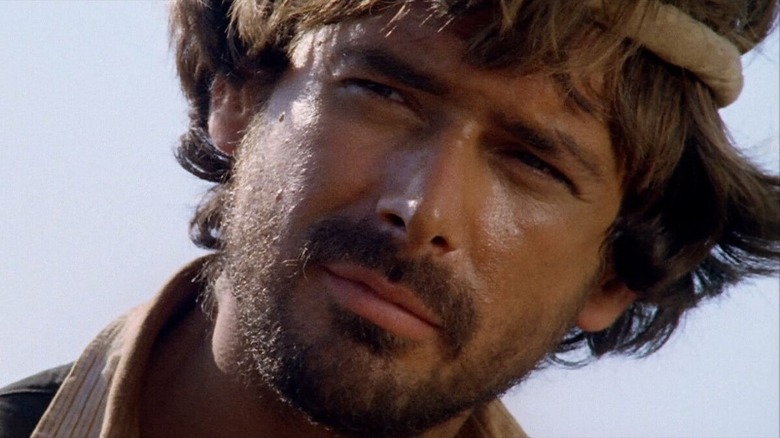
When the Bride digs herself out of the grave Budd trapped her in (thanks to "the cruel tutelage of Pai Mei," according to the chapter title), it is a close reenactment of the Stranger (Tomas Milian) doing the same in the opening moments of Giulio Questi's "Django Kill... If You Live, Shoot!" Both characters grasp towards the sky from the freshly dug dirt and then gasp for air as they climb out slowly from the grave. This Spaghetti Western is another tale of revenge, with the protagonist embarking on a quest for vengeance against the gang that double-crossed him and left him for dead.
Just like "Kill Bill," "Django Kill ... If You Live, Shoot!" is stylish in its brutality. In one particularly striking shot, a man is gunned down as the viewer watches from the ground through the spokes of a wagon wheel. It also has a sense of humor that calls to mind the pratfalls in the trailer brawl between the Bride and Elle Driver. When Django plays cat and mouse in a storage room with the man who betrayed him, he pops up from behind a shelf of hats, appearing to try on different bowlers as he evades bullets. The combination of bloody beauty and comedic violence is a subtle hallmark of "Kill Bill," and you can trace that style back to films like "Django Kill ... If You Live, Shoot!"
Game Of Death
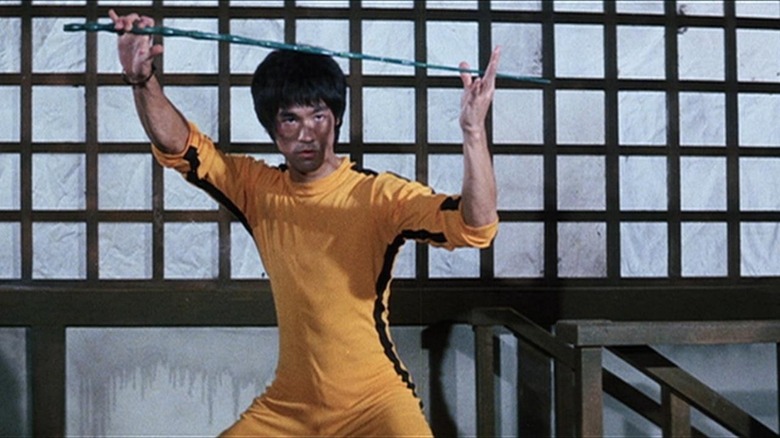
Though her real name is Beatrix Kiddo, Uma Thurman's character in "Kill Bill" is generally referred to as the Bride. One would think that her most iconic look would be a wedding dress, but her yellow and black jumpsuit from the fight at the House of Blue Leaves lingers in the viewer's memory. That jumpsuit is modeled after Bruce Lee's even more iconic look in the climax of "Game of Death," the posthumous film cobbled together using existing footage of Lee and new scenes using body doubles.
Once again, we see a combination of brutal agility and goofy humor in the fight scenes, as Lee's character, Billy Lo, taps out "Shave and a Haircut" with his weapon and smirks before attacking his opponent. The Bride performs a similar move at the House of Blue Leaves, holding back a piece of bent-over bamboo and then snarkily raising an eyebrow before letting it go to smack one of the Crazy 88 in the head.
The structure of the fight scenes is also similar. In both "Game of Death" and "Kill Bill: Volume 1," the protagonist must fight their way through increasingly difficult levels of opponents before they make their way to their primary targets. Billy defeats ever more challenging fighters before he finally faces off against the main boss, and the Bride slices her way through increasing numbers of bodyguards before she gets her well-deserved revenge against O-Ren.
Thriller: A Cruel Picture
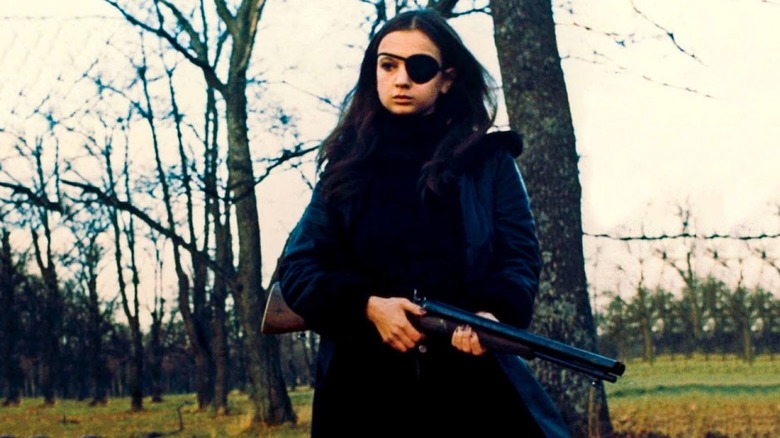
In this notorious rape-revenge thriller, a shy, naïve young woman named Madeleine (Christina Lindberg) goes into town and meets a man named Tony (Heinz Hopf). He turns out to be a pimp, and he drugs her and forces her into illegal sex work, getting her addicted to heroin and cutting out her eye to teach her to be submissive. Madeleine uses her earnings to hire tutors in the art of fighting, and she embarks on a methodical path of revenge against Tony and the other people who victimized her.
Quentin Tarantino based Elle Driver on Madeleine. Not only do they share the same fashion sense (both women coordinate their eye patches with their outfits), but they are also brutal and unflinching in their violence. "Thriller: A Cruel Picture" is uncomfortably intimate, even for a rape-revenge film. Handheld POV shots put the viewer in Madeleine's shoes, and the frequent use of slow motion drives home the ruthless physicality of her revenge campaign. Tarantino wisely eschewed this technique in "Kill Bill" since it tends to drag down "Thriller: A Cruel Picture," but Madeleine's systematic quest for vengeance and her fashion sense are clear influences on "Kill Bill."
If you or anyone you know has been a victim of sexual assault, help is available. Visit the Rape, Abuse & Incest National Network website or contact RAINN's National Helpline at 1-800-656-HOPE (4673).
The Searchers
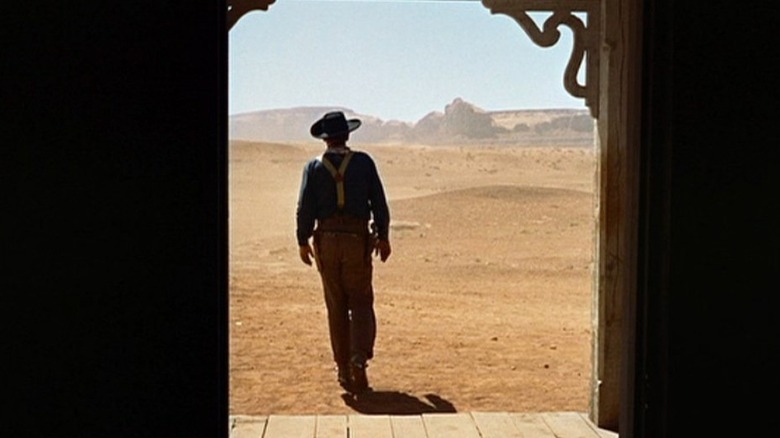
In John Ford's legendary 1956 Western "The Searchers," John Wayne plays Ethan Edwards, a former Confederate soldier searching for his kidnapped niece Debbie (Natalie Wood). Ethan is deeply racist, opining more than once that Debbie is better off dead than with the Comanche raiders who kidnapped her. In the iconic final shot, Ethan stands outside the homestead as Debbie is reunited with her family. He limps into the desert before the door slowly closes on his isolated silhouette.
Quentin Tarantino recreates this shot in "Kill Bill: Volume 2" as the Bride stands in the doorway of the wedding chapel where she and Tommy (Chris Nelson) are to be married. It takes on a special significance considering Bill's final words in "Kill Bill: Volume 1": "Does she know that her daughter is still alive?" Not only is the Bride on a quest for vengeance, but she's also unknowingly searching for her kidnapped daughter. Even more significant, though, is the thematic twist that Tarantino achieves with this cinematic homage.
Ethan walks out of a life to which he no longer belongs and into the unwelcoming desert of his uncertain future. The Bride walks out of a life she can no longer have — a life with her soon-to-be husband and her friends — because the violent, vengeful Bill has come to take it all away. However, Ethan's quest for revenge takes his family away from him, while the Bride's brings her family back together. Bill and the other assassins can't kill her or her child, and in the final moments of the saga, they are reunited as a happy family.
Shogun Assassin

When the Bride finally reaches Bill and learns that her daughter, B.B. (Perla Haney-Jardine), is still alive, she also discovers that B.B. loves jidaigeki films. The little girl requests "Shogun Assassin" as a bedtime video. Directed by Robert Houston, the film edits together scenes from two movies in the "Lone Wolf and Cub" series: "Lone Wolf and Cub: Sword of Vengeance" and "Lone Wolf and Cub: Baby Cart at the River Styx," both of which were directed by Kenji Misumi. The film follows a skilled assassin named Ogami Ittō (Tomisaburo Wakayama) as he travels Japan with his young son, Daigorō (Akihiro Tomikawa), and fights off the ninjas the Shogun (Yūnosuke Itō) sends to murder them.
A lone assassin on a path of vengeance once again serves as a template for "Kill Bill," but "Shogun Assassin" is unique for two reasons: It explicitly addresses the dilemma of working as a hired killer while caring for a young child, which first Bill and then the Bride must contend with, and it is the only movie within a movie from which "Kill Bill" includes extensive dialogue clips. We hear several seconds of Daigorō's narration as the Bride and B.B. cuddle in bed and watch "Shogun Assassin," adding a maternal wistfulness to the already emotional revenge saga. The final words in the film are a title card that reads, "The lioness has rejoined her cub and all is right in the jungle," drawing a parallel between "Kill Bill" and "Lone Wolf and Cub" and providing the best "happily ever after" that a character like the Bride can hope for.
Read this next: 13 Tarantino Projects We Never Saw But Wish We Could've
The post 10 Movies That Inspired Kill Bill appeared first on /Film.
